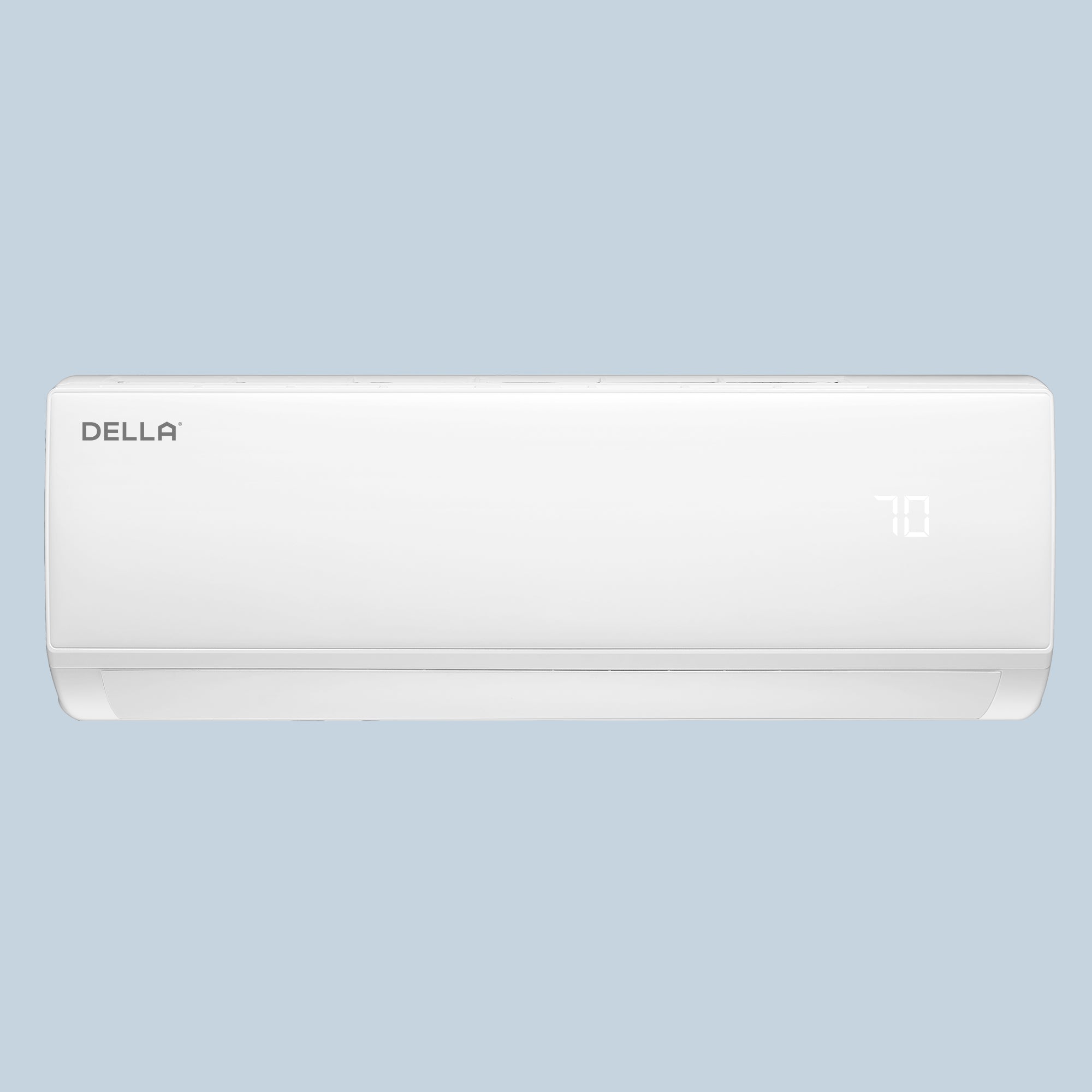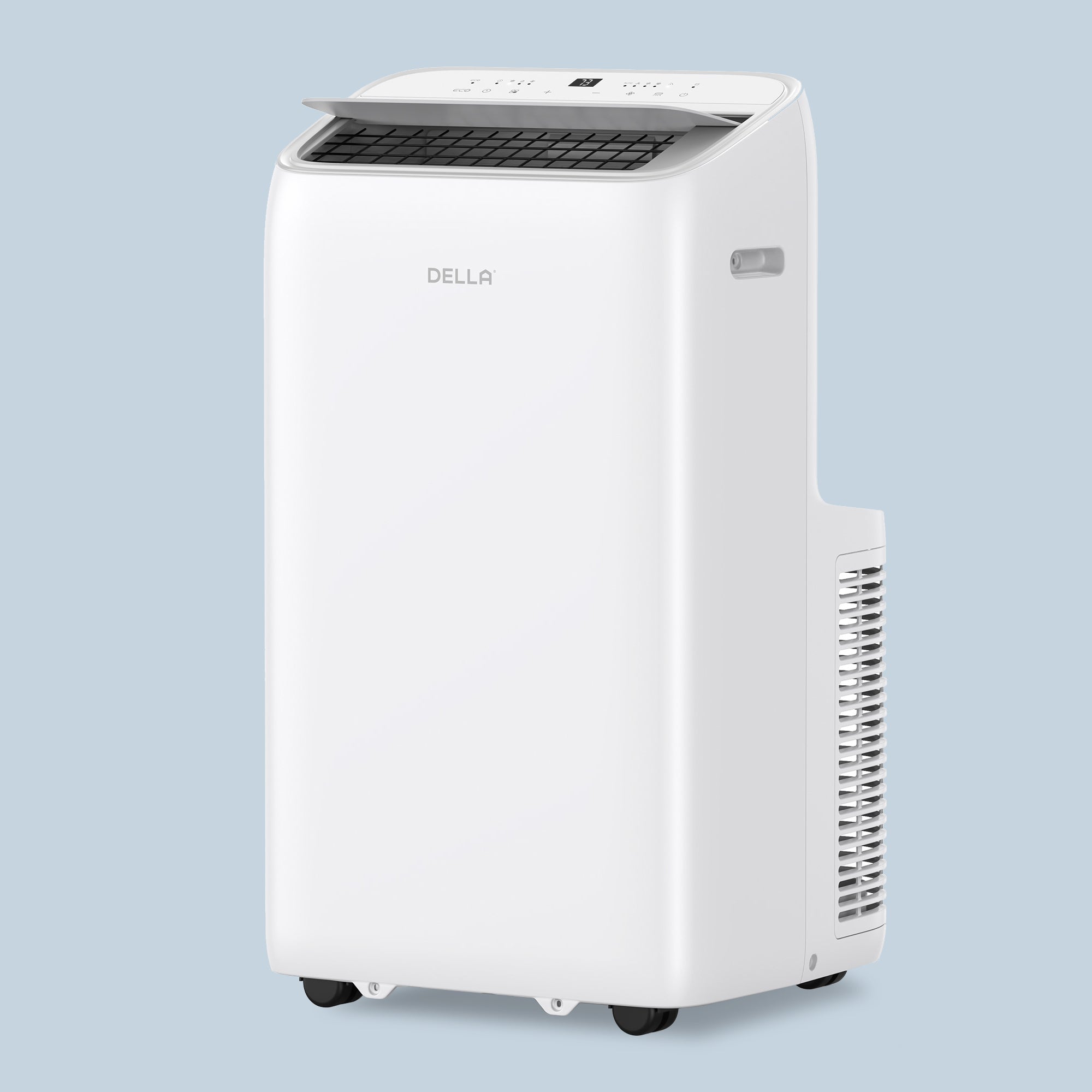Portable air conditioners are compact cooling heroes for spaces where traditional AC units won’t work – but how exactly do they turn sweltering air into cool comfort? Let’s break down the science.
Think of these devices as self-contained climate control systems. Unlike central air conditioning that cools your entire home, portable ACs focus on one room at a time. They use the same basic physics as your refrigerator (compression and evaporation of refrigerant), but with a critical twist: they must vent heat outside while cooling your space.
In this guide, you’ll learn:
-
The four-step refrigeration cycle that makes cooling possible
-
Why do some models need two hoses instead of one
-
How water forms inside and where it goes
-
Proper venting methods to avoid counterproductive heating
By the end, you’ll understand how these units work that’ll help you use them smarter, not harder.
How Portable Air Conditioners Work?
1. Basic Refrigeration Cycle
At the heart of a portable AC is the refrigeration cycle, which is essentially the process of moving heat from one place to another. Here's a simple breakdown:
2. Compression
The cycle begins when the compressor inside the AC unit squeezes refrigerant gas, raising its pressure and temperature. This hot gas is pushed into the condenser coil.
3. Condensation
As the hot, high-pressure gas moves through the condenser coil, it cools down and turns into a high-pressure liquid. The heat from the gas is released into the air outside the room (via the exhaust vent).
4. Expansion
The refrigerant liquid then passes through an expansion valve, where it expands and cools rapidly.
5. Evaporation
The cooled refrigerant enters the evaporator coil inside the unit. As it evaporates, it absorbs heat from the air in the room, cooling the space. The cool air is blown back into the room, and the cycle repeats.
How Portable ACs with Heat Pump Work?
Portable heat pump air conditioners can reverse the refrigeration cycle to provide heating. This is achieved through a reversing valve, which changes the direction of refrigerant flow. Here's how it works in heating mode:
Reversing the Cycle
When heating is needed, the reversing valve switches the roles of the condenser and evaporator coils.
Absorbing Heat from the Outside
The refrigerant absorbs heat from the outside air (even in cold weather) and carries it inside.
Releasing Heat Indoors
The refrigerant releases the absorbed heat into the room through the indoor coil, warming the space.
Cooling the Refrigerant
The refrigerant then cools down and repeats the cycle.
Key Components
To make the refrigeration cycle work, a portable AC uses a few key components. Let’s take a closer look at these:
-
Compressor: This is the "heart" of the AC, compressing the refrigerant gas to start the cooling process.
-
Condenser: The condenser is where the refrigerant gas cools and turns into liquid, releasing heat.
-
Evaporator: The evaporator is responsible for absorbing heat from the air inside the room and cooling it.
-
Expansion Valve: This valve controls the flow of refrigerant into the evaporator, causing it to expand and cool down.

Single-Hose vs. Dual-Hose Portable Air Conditioners: Key Differences
When comparing single-hose portable air conditioners and dual-hose portable air conditioners, the main difference is how they manage air circulation and cooling efficiency.
Single-Hose Portable AC System
A single-hose standing AC unit uses one hose to expel hot air.
However, because the unit creates a vacuum inside, it pulls warm air from outside, which forces the system to work harder to cool the room.
This makes single-hose systems less efficient, especially in larger rooms.
Dual-Hose Portable AC System
A dual-hose AC has one hose to pull in fresh air from outside and another to expel hot air. This design prevents the unit from creating a vacuum, allowing it to cool more efficiently.
Since the unit doesn’t have to fight against the outside air pressure, it can maintain a cooler temperature in the room with less effort, using less energy.

How Does Portable Air Conditioner Drain Water?
Portable air conditioners remove moisture from the air as part of the cooling process. This moisture collects as condensation inside the unit and needs to be drained out.
There are a few methods for handling this water, depending on the model of the AC.
Condensation Process
As the portable AC cools the air in the room, it removes humidity, turning the moisture in the air into water.
This is a normal part of the cooling cycle, and the water must be dealt with to prevent it from accumulating inside the unit.
Drainage Methods
There are three main ways portable ACs handle condensation:
Self-Evaporation
Many portable ACs are designed to evaporate the water back into the air through the exhaust hose. This process works well in moderate humidity conditions, as the water is often small enough that it doesn’t accumulate quickly.
Manual Drainage
Some units require you to manually empty the water from a collection bucket or tray. This method is typically used in higher humidity environments where the unit collects more water than it can evaporate.
Continuous Drainage Hose
For more convenient drainage, some portable ACs come with a hose that can be attached for continuous drainage. This allows the water to be drained directly into a nearby sink or out a window, eliminating the need to manually empty the water collection tray.
How Does Portable Air Conditioner Vent?
For a portable air conditioner to work effectively, it needs a way to expel the hot air it generates. Most portable ACs come with a venting kit that helps you direct the hot air outside.
There are several ways to do this, depending on your space and setup.
Window Venting
The most common and easiest way to vent a portable AC is through a window. Most units come with a window kit that fits into your window frame. The hose attaches to the kit, and the hot air is expelled outside. This setup is quick, simple, and doesn’t require any permanent installation.
Alternative Venting Methods
If window venting isn’t possible, there are a few other ways to direct the hot air outside:
Wall Venting
This method involves installing a vent in the wall, which requires some DIY work or professional installation. It’s a good option for rooms without windows or for those who want a more permanent solution.
Door Venting
If your room has a door that opens to the outside, you can use a venting kit to pass the hose through the door. This method is more flexible than wall venting.
Ceiling Venting
In certain cases, you can vent the hot air through the ceiling, especially in spaces like attics or lofts. This is less common and may require modifications to your ceiling, but it is effective.

Can Portable AC Work Without Venting?
The portable AC unit needs to expel the hot air it generates during the cooling process, and without a proper venting system, this hot air would remain inside the room. Then the mobile home AC unit would only circulate warm air, making it impossible to cool the room effectively.
In short, a portable AC relies on venting to maintain its cooling performance. Without venting, the air conditioner simply wouldn’t be able to maintain the desired temperature in the room.
Maintenance Tips for Portable AC Units
Regular maintenance ensures your portable air conditioner operates efficiently, prevents common issues, and prolongs its lifespan.
Here’s how to keep your unit in top shape:
Regular Cleaning
Filters
A clogged filter reduces airflow. It is advised to clean the filter every 2-3 weeks.
To clean the filter, simply remove it from the unit and vacuum it gently to remove dust and debris. For a deeper clean for the portable AC, rinse it with warm water and let it dry completely before reinserting it.
Coils
Dirty condenser and evaporator coils can affect cooling efficiency and cause the unit to overheat.
Use a soft brush or a vacuum with a brush attachment to remove dust and dirt from the coils.
If the coils are heavily soiled, you may need to use a coil cleaner, which you can spray on and wipe off.
Clean the coils every 1-2 months for optimal performance.
Seasonal Maintenance
Winter Storage Tips for Portable Air Conditioners
At the end of the cooling season, store your portable AC properly to protect it from dust and moisture buildup.
First, clean the filter and wipe down the inside of the unit with a soft cloth.
Then store the portable AC unit in a cool, dry area, away from direct sunlight. If possible, cover it with a breathable cloth (not plastic) to prevent dust from accumulating.
Before Reuse
When you take your portable AC out for the next season, inspect the filter and clean it if necessary.
Check the exhaust hose to ensure it’s not clogged, and make sure the unit is free of dust or debris. It's helpful to run the AC for a few hours before full use.

Are Portable Air Conditioners Worth It?
Portable air conditioners come with several benefits but also have a few drawbacks.
Pros
Portability
As the name suggests, the biggest advantage of portable air conditioners is their portability. They are easy to move from room to room or position them where you need cooling the most.
Affordability
Portable ACs tend to be less expensive than central or window air conditioners. They are a cost-effective solution for those who need to cool a small space without large investing.
Ease of Installation
Portable ACs are easy to install. Most of them come with a simple window kit that you can set up in minutes, and you don’t need to hire a professional to install them.
Cons
Lower Efficiency
Portable ACs are generally less efficient than window or central ACs especially in larger spaces, and this can lead to higher energy consumption. Additionally, single-hose units are less efficient than dual-hose models, as they tend to pull warm air into the room.
Noise
While portable ACs are quieter than some window units, they still produce noise. The fan, compressor, and exhaust system can be noticeable, especially in smaller rooms.
Space Usage
Portable ACs take up floor space and can be bulky. They require a hose for venting, which means you’ll need space near a window or door for proper setup. In smaller rooms, this can make the unit feel obtrusive.
Summary
For short-term use or cooling smaller spaces, portable air conditioners can be a great solution that saves you money upfront.
However, for long-term use, especially in larger spaces, higher energy consumption may not be as cost-effective.
Conclusion
Portable air conditioners offer a great balance of flexibility and affordability, making them perfect for cooling smaller spaces. While they may not be as efficient as central or window units, their easy setup and portability make them ideal for short-term or supplemental cooling.
If you're looking for the best portable AC that offers both cooling and heating options, consider Della’s portable air conditioners with heat pump functionality.
Our 14000 BTU portable air conditioner, along with 8000 and 10000 BTU models, provides reliable, efficient solutions to keep your space comfortable year-round. Shop now and find the perfect model for your needs!
Read More:
What Size of Mini Split Air Conditioner Do I Need?
Best 8000 BTU Window Air Conditioner in 2024
8 Steps to Install a Mini Split Air Conditioner Easily
How Many BTU to a Ton? Your Guide to the Right Air Conditioner








LEAVE A COMMENT
All comments are moderated before being published.
This site is protected by hCaptcha and the hCaptcha Privacy Policy and Terms of Service apply.